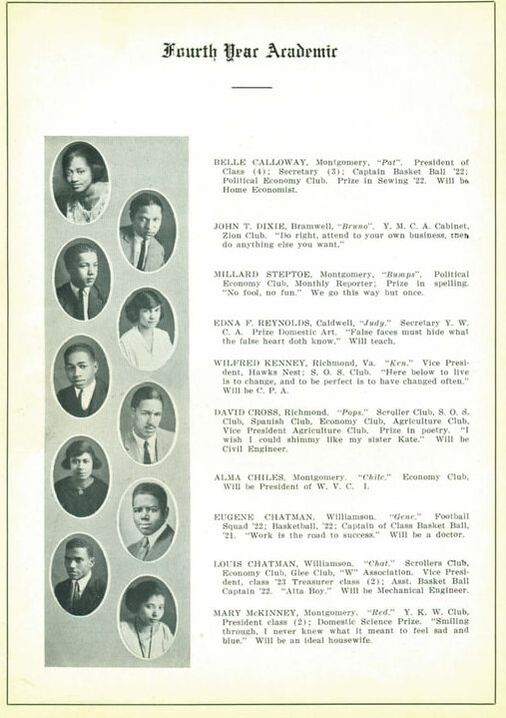The faculty of Bolling High School were well-educated, and scholarship was an important focus for the school. Many of the Bolling teachers were local to Greenbrier County and had grown up before the development of a Black High School. They had to work harder for the same qualifications as their white counterparts. As educators, Bolling teachers were advocates for educational improvements, attended state and national conferences, and even took on political roles like advocating for better benefits for retired teachers. Following the close of Bolling, these same educators faced difficulty in finding job opportunities in the integrated school system. The strength of Bolling’s scholarship is seen in the success of its students, despite the inequalities faced by its teachers and students.
West Virginia Teachers Association
The West Virginia State Teachers Association, formed in 1891, was the professional organization for Black educators in the state of West Virginia. Formed by Black educators who were not allowed access to white educational organizations, the WVSTA provided professional development and advocated for legislative changes. The WVSTA ended in 1954 when the organization merged with the white West Virginia Education Association following school integration. Many members of the Bolling faculty actively participated in the WVSTA, and later the integrated organization.
|
|
|
citation: Bickley, Ancella R. "West Virginia State Teachers’ Association." e-WV: The West Virginia Encyclopedia. 29 October 2013. Web. 29 January 2022.
Commencement
|
Graduation was a major event for Bolling. Alumni tell stories recalling the excitement and celebration of graduation. Click through the images, right, to read about Bolling's graduation celebrations through the years.
|
|
West Virginia State and Higher Education
|
Black West Virginians faced limited access to higher education. From 1867 until 1891, Storer College, located in Harpers Ferry, was the only college available to Black students in West Virginia. In 1891, West Virginia State was founded in Institute, WV located near Charleston. This school was originally created with a focus on trade and agriculture, but by 1915 the school also provided teacher training and college degrees. The campus of West Virginia State also provided a high school education for many Black West Virginians who were not provided high school education in their home counties. Another option for higher education was provided in 1896 when Bluefield State opened. Almost all of Bolling's faculty attended either West Virginia State or Bluefield State for their undergraduate education.
Citation: Thorn, Arline R. "West Virginia State University." e-WV: The West Virginia Encyclopedia. 30 July 2021. Web. 25 February 2022. |
Integration
In 1954 the Supreme Court ruled in Brown v Board of Education that racial segregation in public schools was illegal. School integration came slowly in Greenbrier County. In the fall of 1954, as Greenbrier County moved to integrate, the white students at White Sulphur Springs High School protested the arrival of Black students. The County Board of Education moved to re-segregate schools causing a small group of Black students to relocate to D.C. rather than return to a segregated school. Further court cases were required to fully integrate the school system. The end of Bolling as a school created mixed feelings. While local community members fought hard for integration, the end of segregated schools also meant that students lost beloved teachers, teachers faced uncertain job opportunities, and students and teachers alike faced potential harassment and violence in newly integrated schools. The Bolling School slowly declined in number of students until its last year in 1964 when the school permanently closed.




